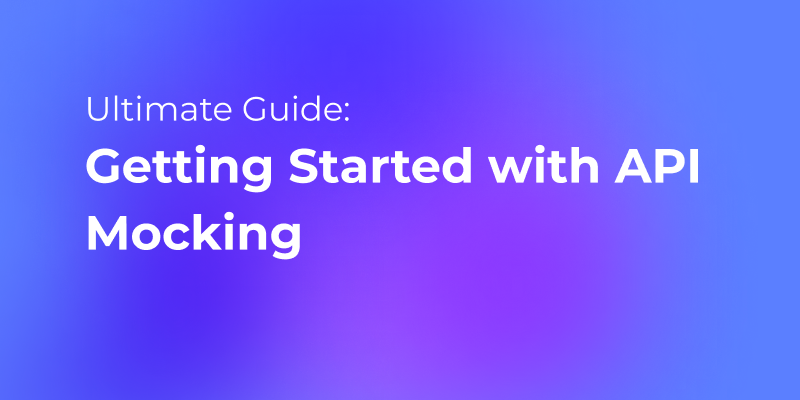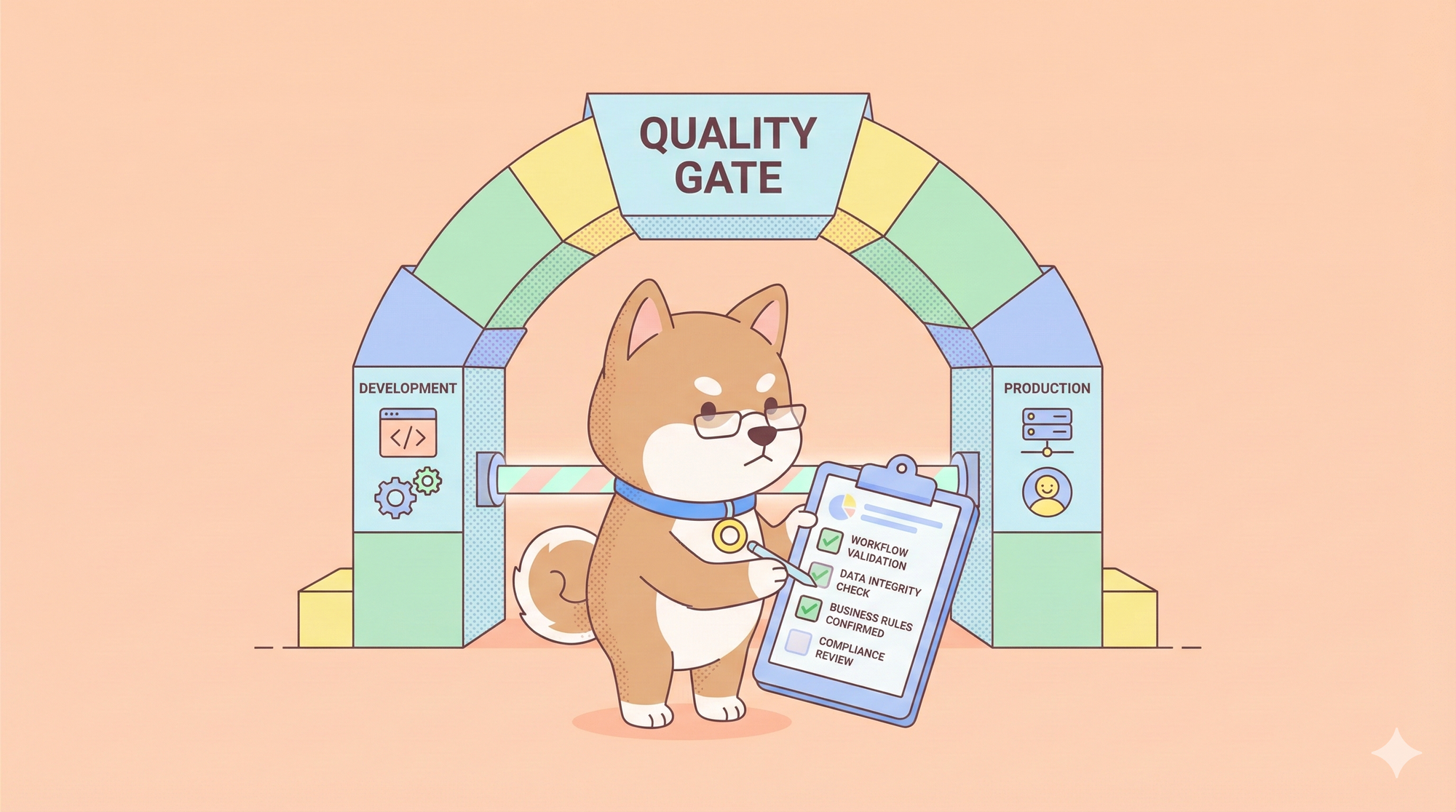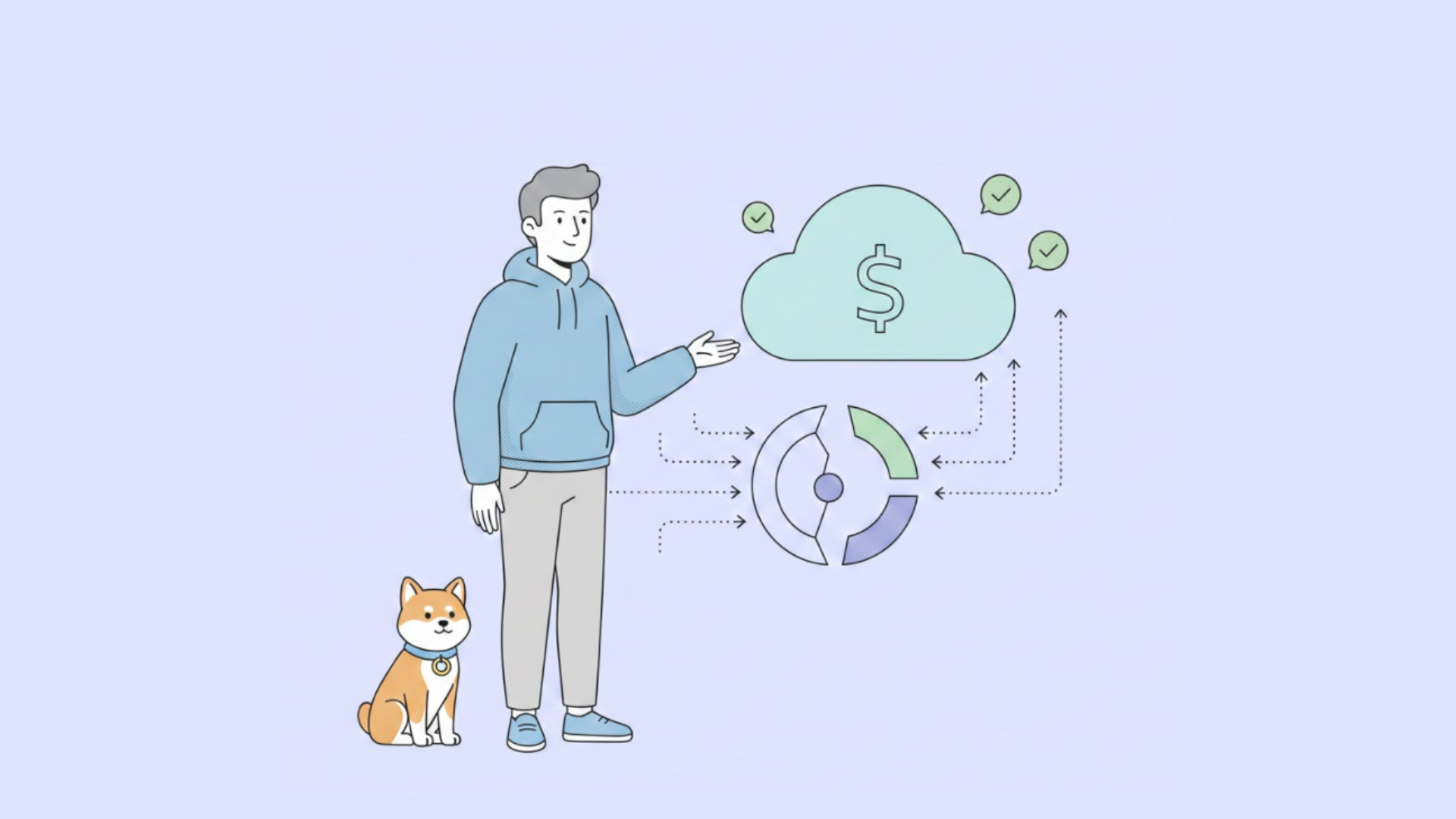In the rapidly evolving landscape of software development, ensuring the robustness and reliability of APIs (Application Programming Interfaces) is crucial. Automated API testing plays a pivotal role in this process, enabling developers and testers to deliver high-quality software efficiently. This blog will explore what API testing and API testing automation entail, the types and significance of API testing, the benefits of automation, the leading free API testing tool and some best practices.
What is API Testing?
API testing involves verifying that Application Programming Interfaces (APIs) function as expected. It focuses on ensuring the endpoints, request/response formats, status codes, and overall API behavior are correct. API testing ensures that the interactions between different software components meet the required functionality, performance, reliability, and security standards.
What is API Testing Automation?
API testing automation uses automated tools and scripts to perform API tests. Instead of manually testing each endpoint, automated tests can be scheduled to run at any time, providing quick and consistent feedback on API performance and functionality. This process is integrated into the continuous integration/continuous deployment (CI/CD) pipeline to ensure regular and thorough testing.
Types of API Testing
API testing encompasses various types of tests, each serving a distinct purpose:
- Functional Testing: Validates the functionality of APIs against defined specifications.
- Load Testing: Assesses the performance of APIs under varying loads to ensure stability.
- Security Testing: Ensures APIs are secure from vulnerabilities and unauthorized access.
- Interoperability Testing: Verifies that APIs can work seamlessly across different platforms and environments.
- Validation Testing: Confirms that APIs adhere to design specifications and standards.
- Error Handling Testing: Checks how the API handles errors and invalid inputs.
- Regression Testing: Ensures new changes do not break existing functionality.
Differences Between Manual and Automated API Testing
API testing is crucial for ensuring that APIs function correctly and reliably. There are two primary approaches to API testing: manual testing and automated testing. Here’s a detailed comparison between manual and automated API testing:
Manual API Testing

Process:
- Execution: Testers manually execute test cases by sending requests to the API and verifying the responses. This can involve using tools like Postman or CURL to interact with the API.
- Verification: Responses are checked manually to ensure they meet the expected outcomes.
Advantages:
- Flexibility: Testers can easily adapt to changes and new requirements on the fly.
- Exploratory Testing: Allows testers to explore the API and discover issues that automated scripts might miss.
- Low Initial Cost: Requires minimal setup, making it suitable for smaller projects or initial development stages.
Automated API Testing
Process:
- Execution: Automatically send requests and verify responses against expected outcomes. Tools like Apidog, and RestAssured are commonly used.
- Verification: Automatically checks responses and offers a test report, reducing the need for manual intervention.
Advantages:
- Efficiency: Once set up, tests can be executed quickly and repeatedly, saving significant time.
- Consistency: Eliminates human error, providing consistent and reliable results.
- Scalability: Suitable for large projects with frequent changes, as tests can be run continuously.
- Integration: Easily integrated into CI/CD pipelines, ensuring tests are run automatically with each code change.
The Significance of API Testing Automation
API testing automation is essential for several reasons:
- Efficiency: Automated tests can be run quickly and frequently, ensuring rapid feedback on the quality of the codebase.
- Consistency: Automation reduces human error and ensures consistent test execution.
- Scalability: Automated tests can handle large datasets and numerous test scenarios effortlessly.
- Continuous Integration/Continuous Deployment (CI/CD): Automation is integral to CI/CD pipelines, allowing for seamless integration and deployment of new features and updates.
Benefits of API Testing Automation
The primary benefits of API testing automation include:
- Time and Cost Savings: Reduces the time and effort required for manual testing.
- Improved Test Coverage: Allows for comprehensive testing across various scenarios and edge cases.
- Early Bug Detection: Identifies issues early in the development cycle, reducing the cost and effort of fixing bugs.
- Enhanced Reliability: Ensures APIs function correctly and reliably across different environments and conditions.
Best Free API Testing Tool– Apidog
Apidog simplifies the lives of developers by providing a unified, cost-free platform for all stages of API development. Its standout feature, API testing automation, offers a suite of tools designed to streamline and enhance the testing process. With Apidog, users can easily create, manage, and execute API tests automatically, making it a popular choice among developers and testers.

Key Features of Apidog's Automated Testing
1. Automated Test Case Generation
One of Apidog's most powerful features is its ability to automatically generate test cases from API specifications. This feature saves considerable time and effort, allowing API testers to focus on more complex testing scenarios. By leveraging the API documentation, Apidog can create comprehensive test cases that cover a wide range of inputs and outputs, ensuring thorough validation of the API.

2. Seamless Integration with CI/CD Pipelines
Apidog supports seamless integration with continuous integration and continuous deployment (CI/CD) pipelines. This integration ensures that API tests are executed automatically with each build and deployment, facilitating early detection of issues and enabling faster resolution. The ability to automate these tests within the CI/CD workflow enhances the overall efficiency of the development process.

3. Comprehensive Test Management
Apidog offers robust test management features, allowing users to organize, execute, and monitor test cases efficiently. With Apidog, you can group test cases into suites, customize automated test runs, and track the results over time. This centralized management simplifies the testing process and provides valuable insights into the performance and reliability of your APIs.
4. Data-Driven Testing
Apidog supports data-driven testing, enabling you to run the same set of tests with different data inputs. This feature is particularly useful for validating API behavior under various conditions and ensuring consistent performance. By using data files or databases to supply input values, Apidog can automatically execute multiple iterations of a test, providing comprehensive coverage with minimal manual intervention.
5. Real-Time Test Execution and Reporting
With Apidog, you can execute tests in real time and view detailed reports on the outcomes. The real-time execution feature allows for immediate feedback, enabling quick identification and resolution of issues. The detailed reports provide insights into the test results, including passed and failed cases, response times, and error messages, helping you understand the performance and reliability of your APIs better.

6. Mock Server Integration
Apidog's integration with mock servers allows for testing APIs in isolated environments without the need for a fully functional backend. This feature is particularly beneficial during the development phase, enabling you to validate API interactions and behaviors even before the actual implementation is complete. By simulating responses from the backend, mock servers help in testing various scenarios and ensuring API robustness.

7. Advanced Assertions and Validation
Apidog provides advanced assertion and validation capabilities, allowing you to define complex conditions and rules for your test cases. You can create custom assertions to validate response data, headers, status codes, and more. These advanced validation features ensure that your APIs meet the required specifications and behave as expected under different conditions.
How to Test API Automatically Using Apidog?
Automating API testing with Apidog can significantly streamline your development process, ensuring your APIs are robust, reliable, and ready for deployment. This step-by-step guide will walk you through the process of setting up and executing automated API tests using Apidog.
Step 1: Create an Apidog Account and Set up Your Project
1. Sign Up: Visit Apidog’s website or download the app by clicking the button below and sign up for a free account.

2. Create a New Project: After logging in, create a new project by clicking on the "New Project" button. Provide a name and description for your project.
Step 2: Define API Endpoints
1. Add API Endpoints: In your project dashboard, go to the API section and click on "Add Endpoint" to define your API endpoints. Provide details such as the endpoint URL, request method (GET, POST, PUT, DELETE, etc.), request headers, and body parameters.

2. Import API Specification: If you have an API specification document (like Swagger/OpenAPI), you can import it directly into Apidog. This will automatically create the API endpoints for you.
Step 3: Create Test Scenarios for API Testing Automation
1. Create a new test scenario: Once all API endpoints are created and ready, navigate to the "Testing" section of your project. Click on "+" and select "New Test Scenario" to create a new API test scenario.

2. Customize testing steps for the testing scenario: On the newly created blank testing scenario, click "+Add Step". Then on the pop-out window, choose what to add in this step, which can be an endpoint, endpoint case, custom request, cURL, testing conditions(Group, ForEach Loop, If, For Loop, and Wait) or other reusable testing scenarios.

3. Specify custom settings for each test step: Clicking on any step of the test scenario will lead you to the setting panel for that step. From there, you can modify endpoint details, API testing rules, and other necessary details.


Step 4: Run API Testing Scenario Automatically
1. Set up rules for the API testing scenario: When finished customization for each step, click "Exit" on the top left. Then on the test scenario creation page, set up rules for the whole API testing scenarios on Functional or Performance.
2. Start the testing: Click on "Run" to start the automatic API testing.

Step 5: Analyze API Test Results
1. View Real-Time Results: After executing the tests, view the results in real-time within the Apidog interface.

2. Report Insights: Navigate to the "Test Reports" section to see detailed reports. The test reports will provide insights into passed and failed test cases, response times, error messages, and more. Use this information to identify and fix issues promptly.

3. Share API test report with teammates: Click on "Share" at the top right of the test report to create a shared link and send it to your teammates for better collaboration.

Step 6: Continuous Monitoring and Maintenance
- Regular Updates: Continuously update your test cases and API specifications to reflect changes in the API.
- Monitor Results: Regularly monitor test results and address any issues promptly to ensure ongoing API reliability and performance.
Automated API Test Cases Using Apidog
1. Repeated Actions:
- Scenario: A pet shop needs to update the status of each pet sold today.
- Implementation: Use Loops to repeat steps for querying and updating pet statuses for a fixed number of cycles (e.g., 10 pets).
2. Conditional Actions:
- Scenario: Adjust actions based on pet view counts.
- Implementation: Use conditional judgments to remove pets with views < 10 from sale and increase the price for pets with views ≥ 10.
3. Time-Sensitive Actions:
- Scenario: Simulate user interaction with a pet listing.
- Implementation: Set a wait time of 1000 milliseconds after viewing pet details before liking the pet.
4. Grouping Related Steps:
- Scenario: Standardize the steps for managing pet inventory.
- Implementation: Group steps like querying, updating, and verifying pet statuses into a single test group.
5. Comprehensive Error Handling:
- Scenario: Ensure robust testing in case of errors.
- Implementation: Set global error handling to define how to proceed when errors occur, ensuring smooth test execution.
By leveraging the built-in rules for API testing, Apidog’s API testing automation significantly enhances the testing process, making it more efficient, realistic, and manageable. This results in better quality assurance and a smoother development cycle.
Benefits of Apidog's Automated API Testing Features
- User-Friendly Interface: Apidog's intuitive UI makes it easy for users to create and manage tests.
- Increased Efficiency: Automated test case generation and execution significantly reduce the time and effort required for manual testing.
- Enhanced Accuracy: Automated tests minimize human error and provide consistent, repeatable results.
- Improved Test Coverage: Data-driven testing and comprehensive test management ensure thorough validation of APIs across various scenarios.
- Enhanced Readability: Grouping related test steps makes test cases easier to understand and manage.
- Early Feedback: Real-time test execution and reporting provide immediate insights, allowing for quick issue resolution and faster development cycles.
- Collaboration Features: Facilitates collaboration among team members, enhancing productivity and efficiency.
- Seamless Integration: CI/CD integration enables continuous testing and early detection of issues, improving the overall quality of the software.
API Testing Automation Best Practices
To ensure effective API testing, consider the following best practices:
- Clear Documentation: Maintain detailed API documentation to facilitate understanding and testing.
- Comprehensive Test Coverage: Ensure all possible scenarios and edge cases are tested.
- Regular Updates: Continuously update tests to reflect changes in the API and its usage.
- Security Focus: Prioritize security testing to protect against vulnerabilities and unauthorized access.
- Automated and Manual Testing: Use a combination of automated and manual testing to cover all aspects of the API.
Conclusion
API testing automation is indispensable for modern software development, ensuring that APIs are robust, reliable, and secure. By leveraging tools like Apidog, developers and testers can enhance their testing processes, achieve better test coverage, and streamline their workflows. Implementing best practices and focusing on continuous improvement will ensure the delivery of high-quality APIs, meeting the demands of today's fast-paced digital landscape.




